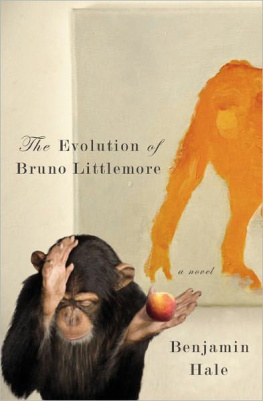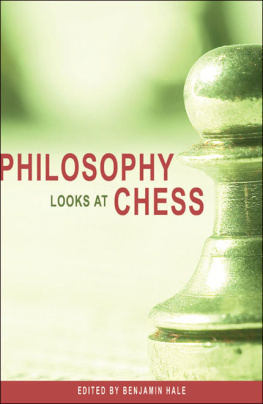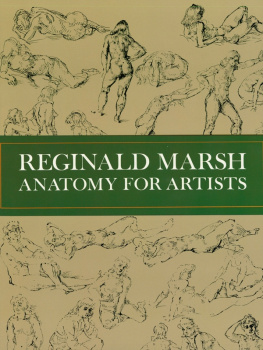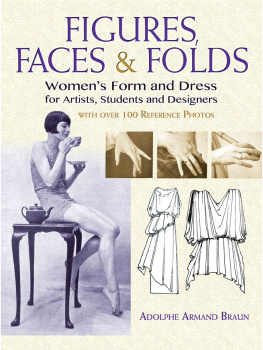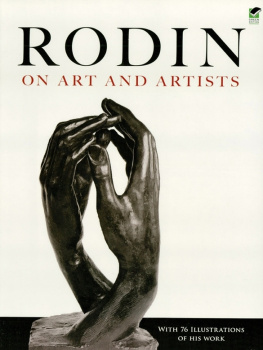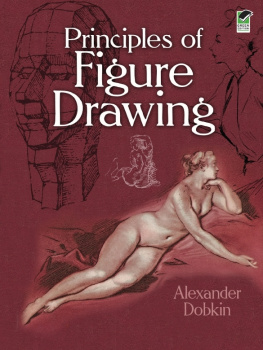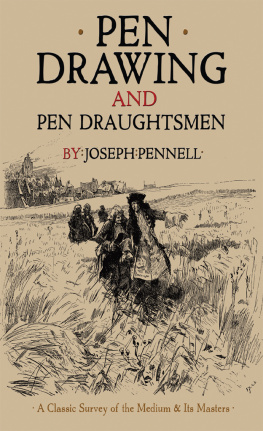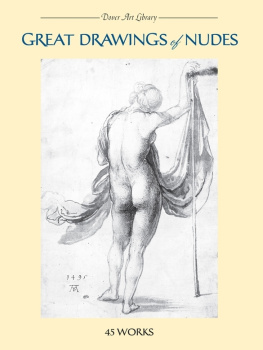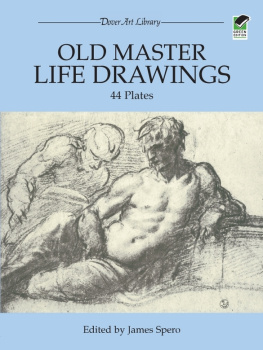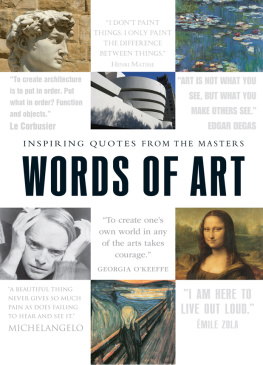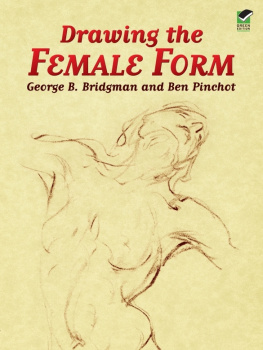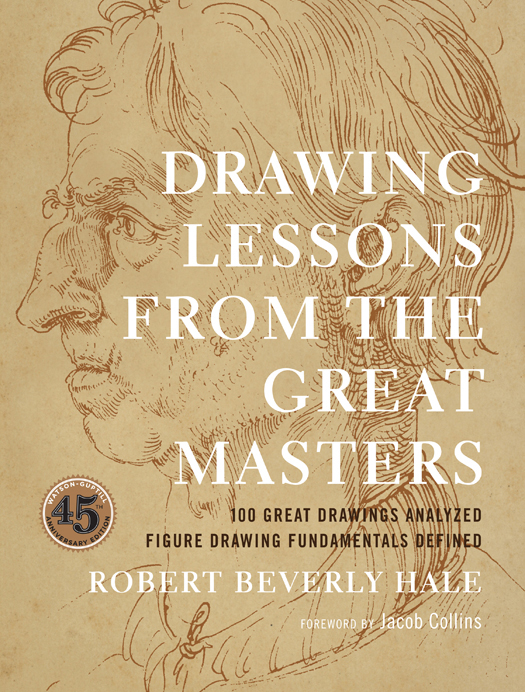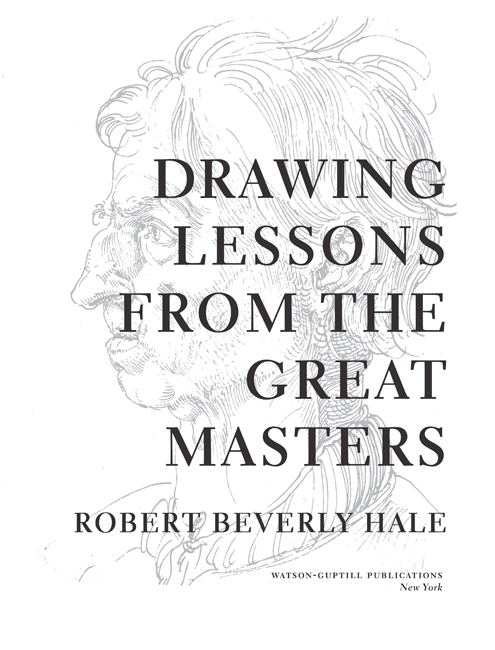Head of a Man by Albrecht Durer (14711528), pen, 8 3/16 5 13/16 (20.8 14.8 cm), reproduced courtesy of the Trustees of the British Museum.
45 TH A NNIVERSARY E DITION
First printing 2009
Copyright 1964 by Watson-Guptill Publications
First published in 1964 in the United States and Canada by Watson-Guptill Publications.
The 2009 edition is published by Watson-Guptill Publications, an imprint of the Crown Publishing Group, a division of Random House, Inc., New York.
www.crownpublishing.com
www.watsonguptill.com
Library of Congress Catalog Card Number: 64-24246
ISBN 978-0-8230-1401-9
eBook ISBN: 978-0-7704-3475-5
Trade Paperback ISBN: 978-0-8230-1401-9
Cover design: Timothy Hsu and Jess Morphew
Edited by Donald Holden
Designed by Betty Binns
All rights reserved.
v3.1
FOREWORD
WHEN I WAS ASKED TO WRITE THIS FOREWORD , I was thrilled and a bit unnerved. The idea has a strange circularity. I am now contributing to the very book that thirty years ago helped form who I have become.
When I was twelve years old, my grandmother, who was an artist and very dear to me, gave me a copy of Robert Beverly Hales Drawing Lessons from the Great Masters. I had always loved drawing, but Hales book changed everything. I spent the following years poring over the plates and explanations in Hales book. I made scrupulous copies of at least a dozen of the drawings, and I applied the fundamental geometric conceptualization to all the drawings I made.
Writing this foreword got me thinking about my drawing life in a fundamental way. In the years since I was a boy and spent so much time with this book, I have made a lot of figure drawings and figure paintings. I went on to study with a few wonderful teachers, was influenced by many gifted colleagues and brilliant students. I pursued skills of naturalistic observational drawingskills that Hale encourages us to move beyond. Further, I have been exposed to methods and ideas that Hale does not touch on in this book and might not have endorsed. But as I now think about drawing as an artist and a teacher, I return to this books deep and powerful principles. What he made so clear to me back then has formed the bedrock under all my subsequent drawing: Know the anatomy deeply and organize it by simple geometrical concepts.
Through the plates and the text, Hale offers a magical glimpse into a lost world, a world he dares you to try to enter. To a dreamy and ambitious young artist, his claim that there is No one alive today who can draw the figure even as well as the worst artist represented in this book, reads like a challenge, like the sword in the stone. After reading something like that, how can you not spend your life trying to join that magical confraternity of giants? I know that, like me, many of my artist friends today were inspired by that lofty challenge.
Since the original publication of this book in 1964, a great many changes have overtaken the art world. I am sure Robert Beverly Hale would hardly recognize it now. Some of the developments he might find a bit unsettling, while others he might look upon with amusement and delight. But the development that I most wish he were here to see is the broadening and deepening enthusiasm for figure drawing that he helped to foster with this book. The last thirty years have seen a vigorous revival of the classical drawing tradition Hale cherished. There are new artists and schools popping up all around us. They are dedicating themselves to the deep and serious figure drawing for which Hale argued so eloquently. All around me I am seeing better and better drawing. Someday soon, the passage in Drawing Lessons from the Great Masters about how no one alive can draw as well any master in the book may not ring so true. And if it doesnt, it will be because of Hales vision.
J ACOB C OLLINS
PREFACE
IT HAS ALWAYS SEEMED to me that if you really wanted to excel in drawing the figure, you should go and study with the greatest living master of figure drawing. But the trouble is that there is no one alive today who can draw the figure very well; there is, perhaps, no one alive today who can draw the figure even as well as the worst artist represented in this book. The explanation for this state of affairs is somewhat complex, but I suspect that any sophisticated student knows the esthetic and historical factors that have brought about the situation. But things are not as bad as they seem, because in these days of unlimited reproductions you can study with any of the old masters you wish.
You see, your instructor in art can do little more than help you solve your technical problems; the rest is very much up to you. And even a cursory examination of the pictures in this book should expose a multitude of technical problems, and the artists brilliant solutions.
Since the studio practices I am attempting to explain were apparently shared by all the artists herein, the pictures are neither placed chronologically, nor grouped by styles: they simply are arranged to give clarity to the text. The pictures also have been chosen to reveal all parts of the body from differing points of view, and to include many studies of heads, hands, and feet. All drawings are reproduced as large as the page size permits and many are actually reproduced larger than the original for detailed study.
ACKNOWLEDGMENTS
I should like to thank Stewart Klonis, Director of the Art Students League, Jacob Bean, Curator of Drawings, Metropolitan Museum of Art and A. Hyatt Mayor, Curator of Prints, Metropolitan Museum of Art for their very kind assistance in the preparation of this book. I should like especially to thank my wife, Nik Mylomas Hale, for all the work she has done. And I am most grateful to my editor, Donald Holden, for his sustaining encouragement and for the many valuable suggestions he has given me. All photos have been supplied by the museums credited in the captions and by Alinari Art Reference Bureau.
CONTENTS
ONE
LEARNING TO DRAW
TWO
LINE
THREE
LIGHT AND PLANES
FOUR
MASS
FIVE
POSITION, THRUST, OR DIRECTION
SIX
ARTISTIC ANATOMY
SEVEN
DRIVING ALL THE HORSES AT ONCE
LIST OF ILLUSTRATIONS
John Henry Fuseli THE DEAD ACHILLES MOURNED BY THETIS
Annibale Carracci STANDING FIGURE OF A NUDE WOMAN
Luca Cambiaso GROUP OF FIGURES
Luca Cambiaso CHRIST LEADING THE CALVARY
Nicolas Poussin HOLY FAMILY
Honor Daumier DON QUIXOTE AND SANCHO PANZA
Leonardo da Vinci MADONNA AND CHILD AND OTHER STUDIES
Jacopo da Pontormo NUDE BOY SEATED
Pupil of Leonardo da Vinci HEAD
Raphael Sanzio FIGHT BETWEEN MAN ON A HORSE AND TWO NUDE SOLDIERS
Albrecht Drer HEAD OF A MAN
Rembrandt van Rijn WOMAN WITH CLASPED HANDS
John Henry Fuseli MAN EMBRACING A WOMAN
Tintoretto (Jacopo Robusti)





